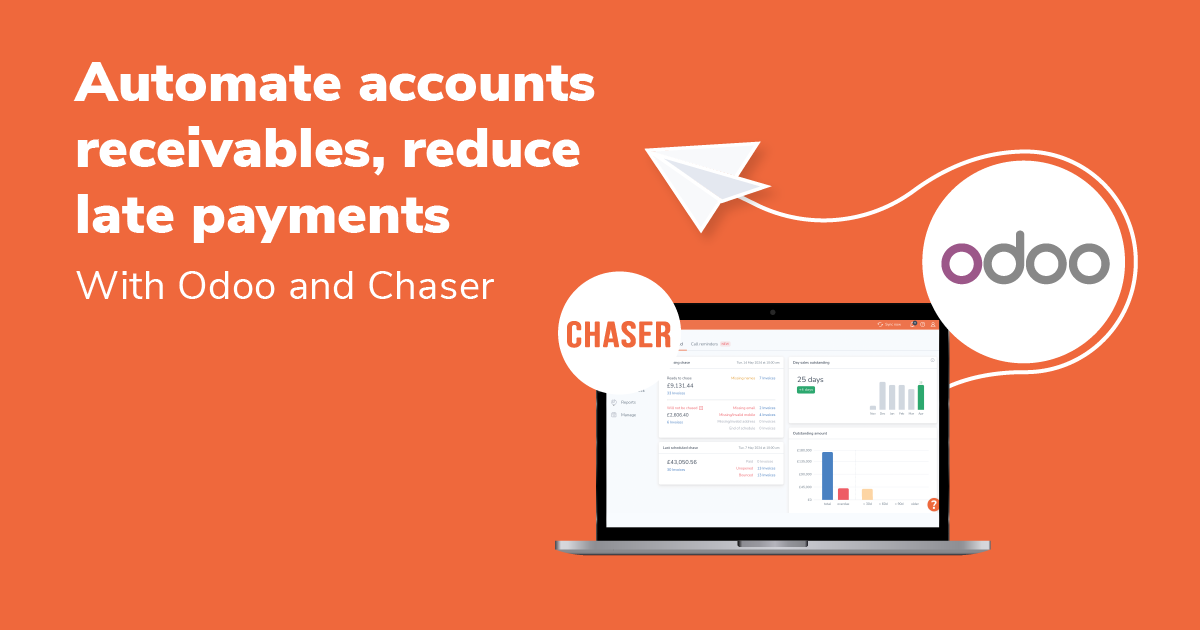Credit control is the process of managing a company's outstanding debts and ensuring that customers pay their invoices on time. While it may seem straightforward, credit control can often present challenges for businesses of all sizes.
Keeping cash flow steady and minimising debt are key priorities for any business, and effective credit control is crucial in achieving these goals.
This makes it essential for companies to identify and address the pain points in their credit control process to ensure smooth and efficient operations.
This guide explores some common challenges businesses face in credit control and suggests strategies for overcoming them.
The pain points in traditional credit control
One of the most significant challenges in credit control is the reliance on traditional manual methods. This includes using spreadsheets, paper-based records, ledger books and manual follow-ups to manage customer accounts and debt collections.
While these methods may have worked in the past, they are now proving to be inefficient and time-consuming for businesses, leading to common pain points such as:
- Difficulty in tracking and managing customer accounts - With manual methods, it can be challenging to keep track of customer payments, outstanding debts, and any discrepancies in the account. This can lead to delays in identifying late-paying customers and following up with them, negatively impacting cash flow.
- Lack of real-time visibility - Manual methods also hinder the ability to get real-time updates on customer accounts and debt statuses. This makes it difficult for businesses to make informed decisions and promptly respond to late payments.
- Inconsistent and delayed follow-ups - Without a streamlined system, following up with customers for late payments can become tedious and time-consuming. This can lead to inconsistencies in the follow-up process, resulting in delayed payments and increased bad debt.
- Errors and inaccuracies - Manual methods are prone to human error, resulting in incorrect data entry, misplaced documents, and other discrepancies. This causes delays and leads to a lack of trust between businesses and customers.
If these examples seem familiar, then it may be time for your business to consider implementing more efficient and modern credit control strategies.
Investing in credit control software or cloud-based solutions can help businesses overcome these roadblocks and improve their overall credit control process.
The struggle with late payments
Late payments are undoubtedly one of the most significant challenges most businesses face in credit control. According to a survey by the Federation of Small Businesses, late payments cause 50,000 businesses to close each year, and the UK economy loses around £2.5 billion annually due to this issue.
The ripple effect of late payments can be damaging for businesses, leading to:
- Cash flow problems - Late payments disrupt the cash flow of a business, making it challenging to pay their own suppliers and employees on time. This can incur additional costs, such as overdraft fees and interest charges.
- Increased bad debt - The longer an invoice goes unpaid, the higher the chances it becomes a bad debt. This can severely impact a business's financial health and stability.
- Strained customer relationships - Persistent late payments can strain the relationship between businesses and customers, leading to negative reviews and loss of future business opportunities.
To overcome this challenge, businesses must have efficient credit control procedures that include clear payment terms, timely follow-ups, and a streamlined process for escalating late payments.
Streamlining communication: balancing persistence with professionalism
Open and effective communication is crucial in credit control, but it can be a delicate balance between being persistent and maintaining professionalism.
While businesses must follow up on late payments, they must maintain a good relationship with their customers and avoid damaging their reputation.
Some strategies for achieving this balance include:
Setting clear payment terms
Clearly stating payment terms from the beginning can help prevent any misunderstandings or disputes in the future. This includes specifying due dates, payment methods accepted, and consequences for late payments.
Using scheduled reminders
Leveraging technology can make credit control more efficient and less time-consuming. Automated reminders and scheduled follow-ups can help businesses stay on top of late payments without being too intrusive or overwhelming for customers.
Personalised messages
Rather than sending generic reminders, businesses can personalise their communication with customers to show that they value the relationship. This could include addressing them by name and acknowledging any previous positive interactions or purchases.
Utilising multiple communication channels
While email is the most common form of communication for credit control, businesses should also consider utilising other channels, such as phone calls or text messages, for more urgent or essential reminders. This can help get a quicker customer response and show that the business is serious about collecting payments.
Implementing technology for enhanced efficiency
Transitioning to more modern, digital-forward credit control methods helps overcome common pain points and improves overall efficiency and accuracy.
Some key features to consider when choosing credit control software or solutions include:
- Automated reminders - As mentioned earlier, automated reminders remove the tedious task of manually sending follow-ups and ensure timely and consistent communication. They can also free up skilled staff to focus on higher-value tasks.
- Real-time visibility - With cloud-based solutions, businesses can get real-time updates on customer accounts and debts, allowing for more informed decision-making and prompt action.
- Seamless integration - Credit control software that integrates with existing accounting systems or other business tools can streamline processes and reduce the risk of human error in data entry.
- Data analytics - Advanced credit control software can provide insights and trends on customer payment behaviour, allowing businesses to anticipate and prevent late payments before they occur.
- Centralised platform - Having a centralised platform to manage customer payment data, outstanding debts, and communication history can help businesses stay organised and make informed decisions.
- Payment portals - Offering customers the option to make payments directly through a secure online portal can help speed up the payment process and reduce late payments.
These are just some of the many ways technology can help streamline credit control and improve overall efficiency. As businesses continue to face the challenge of late payments, embracing digital solutions could be a game-changer for their financial health and success.
Proactive measures: predicting and mitigating risks
Accurate prediction in credit control is key to mitigating potential risks and preventing late payments. Businesses can take proactive measures to ensure they are aware of potential issues and can address them before they become problems.
Some ways to predict and prevent late payments include:
Credit checks
Before entering a business relationship, it is essential to conduct credit checks, especially for new customers. This helps businesses understand their creditworthiness and the potential risk of non-payment. Rather than relegating them to the onboarding process, credit checks should be an ongoing practice for all customers.
Setting credit limits
Based on the results of credit checks, businesses can set a credit limit for each customer. This helps mitigate risk and ensures that businesses do not overextend themselves with credit.
Monitoring payment trends
By tracking and analysing customer payment data, businesses can identify trends and patterns in payment behaviour. This can help them anticipate potential issues or delays and proactively address them before they result in late payments.
Implementing credit terms based on risk assessment
Businesses can implement stricter credit terms for customers deemed high-risk based on credit checks and payment trends. This could include shorter payment deadlines or requiring upfront payments for larger orders.
By taking proactive measures to predict and mitigate risks, businesses can significantly reduce the impact of late payments on their cash flow and overall financial stability.
Payment plans
Payment plans can also be implemented for customers who are struggling to make total payments on time. This allows them to pay in instalments over a set period, making it easier for them to manage their cash flow while still fulfilling their payment obligations.
Training and skill development: empowering your AR team
While the tools and strategies mentioned above can significantly improve credit control processes, investing in the training and development of your accounts receivable (AR) team is crucial.
This helps them become more efficient and effective in their roles and empowers them to handle challenging situations confidently.
Some areas to focus on when training AR staff include:
- Negotiation skills - Negotiation skills are critical when dealing with complex or high-risk customers. Training in negotiation techniques can help AR staff communicate effectively and reach a mutually beneficial solution.
- Understanding of financial software - AR staff should thoroughly understand the software and tools used for credit control to make the most of their features and capabilities.
- Time management - With automated reminders and other tools, AR staff can save time on manual follow-ups. However, it is essential to train them in effective time management techniques so they can prioritise tasks and handle multiple accounts efficiently.
- Staying updated with industry trends - The credit control landscape is constantly evolving, and it is crucial for AR staff to stay updated with industry trends and best practices. This can help them identify new tools or strategies to benefit their processes.
Investing in the training and development of your AR team benefits the business and shows employees that they are valued and invested in, leading to higher job satisfaction and retention rates.
Implementing a digital credit control strategy
Proactive management in credit control and AR processes is crucial for businesses to maintain financial stability and avoid the negative impacts of late payments.
By integrating technology, taking proactive measures, and investing in staff training and development, businesses can implement a comprehensive digital credit control strategy that significantly improves efficiency and mitigates risks.
Traditional skills and wisdom, combined with cutting-edge technology, can help businesses navigate the challenges of credit control effectively and stay on top of their accounts receivable processes.
With the right tools and strategies in place, businesses can experience improved cash flow, reduced late payments, and, ultimately, greater financial success.
Chaser's award-winning credit control software offers businesses a comprehensive solution to streamline credit control processes and improve cash flow. To learn more about how Chaser can benefit your business, book a demo or start your 14-day free trial today!




